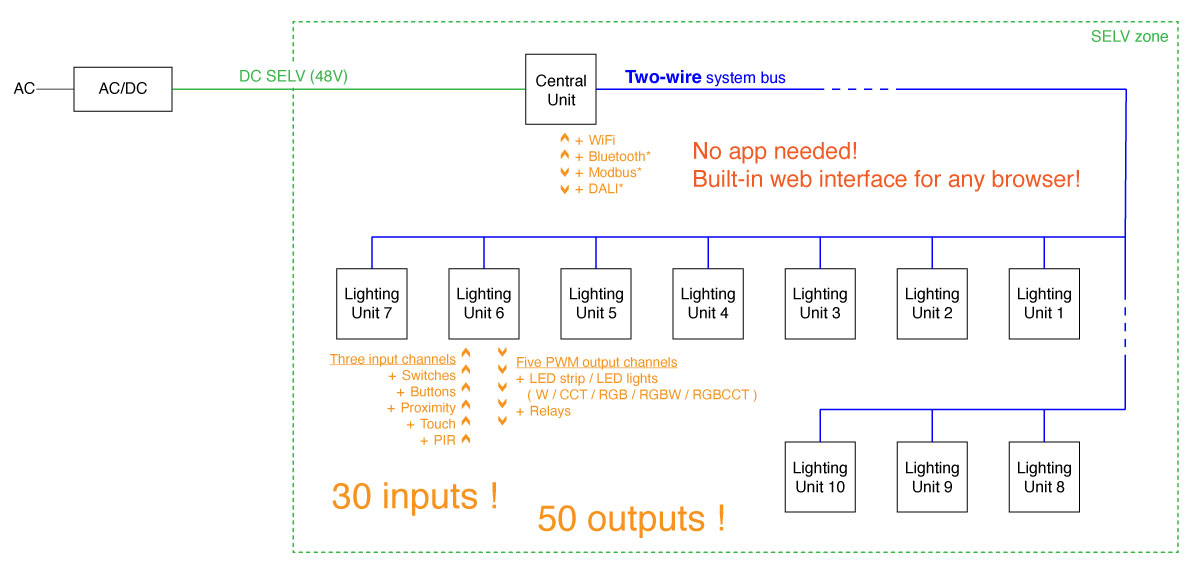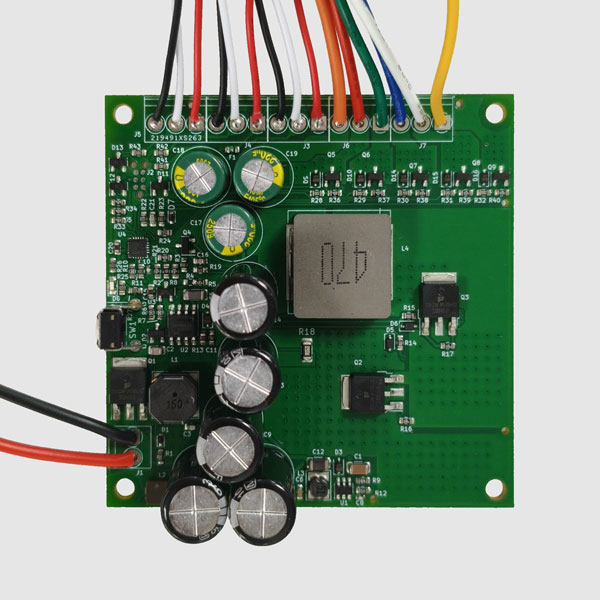
General bus characteristics
Voltage: 48V DC
Maximum power in continuous operation mode: 400W
Required: 18 AWG double stranded wire
The system bus can be heterogeneous and consist of several sections of wire (up to 30 sections) connected together. The cross-sectional area of the wires in all sections must be sufficient to carry a current of 10 A continuously.
The wires of the system bus can be connected in any way that ensures a reliable connection when carrying a 10 A current (e.g., soldering, welding, twisting, terminal block) and provides electrical insulation for the bus wires (to prevent short circuits).
The system bus can have up to five nested branches (tested). The length of the branch can be any (as long as the total maximum distance from the LU to the CU is not exceeded).
The branch leads from the bus to the LU can be of any length (within the total maximum distance from LU to CU). The leads can have any safe method of connection to the system bus.









